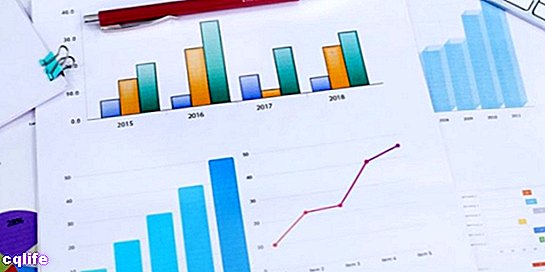- What is statistics?
- History of statistics
- Importance of statistics
- Branches of statistics
- Statistic and probability
We explain what statistics is, its measurement levels, history, branches and its importance. Also, differences with probability.

What is statistics?
Statistics is a formal scientific discipline and deductive, often considered a branch of mathematics, which studies variability and the laws of probability, through various tools, both conceptual and sampling.
The field of statistics includes the methods and procedures necessary to collect information of the reality and organize, contextualize and classify it in order to obtain viable conclusions, expressed mathematically. It can be said that it is the science of the management of data.
In this way, statistics contemplates four levels of data measurement, known as scales from measurement statistics, which are:
- Nominal, which describes variables whose difference between them lies more in quality than in quantity.
- Ordinal, which describes variables on a continuum in which their values can be ordered, that is, assign a hierarchy or order to the data.
- Interval, which describes variables whose values establish recognizable intervals.
- Rational, which describes variables with equal intervals and which allow an absolute zero to be placed, in such a way that it represents the absence of characteristics.
Although statistics is a field of study in itself, it is characterized by its transversal nature, that is, by serving as a tool for many other disciplines and sciences, regardless of their specific fields of knowledge: biology, the economy, the demography, and so on.
History of statistics
The antecedents of statistics abound in the Antiquity, especially when the first great empires of numerous population, such as Babylon, Egypt or China, in which the need to count the population and obtain relevant information for the Condition, regarding the collection of taxes and other similar matters.
However, the first methods recorded probability calculus appear in the correspondence between Pascal and Pierre de Fermat in 1654. On the other hand, the first scientific treatments of the matter are by Christian Huygens in 1657, as well as the works Ars conjectandi by Jackob Bernoulli in 1713 and Doctrine of possibilities by Abraham de Moivre in 1718.
Formally, statistics emerged in the nineteenth century, when it was recognized as the discipline that studies the ways to collect data and information. The term had already been coined by the Prussian economist Gottfried Achenwall (1719-1772), who had proposed it as the "science of state affairs", that is, Statistik, translated into English as "political arithmetic."
Although Achenwall is recognized as the father of this discipline, its implementation in other areas of human life is due to the Scottish agronomist John Sinclair (1754-1835).
Since then, the study of statistics and probability has been incessant. One of its contemporary pivotal moments took place at the beginning of the 20th century, when Francis Galton and Karl Peterson transformed their field of study, bringing mathematical rigor and applying it not only to science, but to science. politics Yet the manufacture.
Importance of statistics
Statistics have an immense relevance in the modern world, which transcends the specific needs of organization of the population that States have. The latter, however, related to control and decision-making, as well as the implementation of public policies, are fundamental matter to approach the thought and the way of life of the populations.
But statistics also serve as an information processing tool for many disciplines, both from the natural Sciences as of the social Sciences, since it allows to collect information regarding objects of any nature.
Branches of statistics
Statistics, broadly speaking, contemplates two well differentiated branches:
- Descriptive statistics, dedicated to the visualization, classification and numerical or graphic presentation of the data that emerged during the study. Its objective is to facilitate the handling of large volumes of data, such as occurs in population pyramids, histograms or pie charts.
- Inferential statistics, dedicated to generating Models and predictions from the studied phenomena, taking into account their randomness dynamics. Through these mathematical models he aspires to find conclusions useful or prognostic that go beyond the scope of the merely descriptive.
Statistic and probability
Both statistics and probability are dedicated to the scientific and formal study of chance, but they do so from two different points of view:
- The probability, for its part, is dedicated to the comparison of the frequency with which an event occurs, as long as it depends on chance, in search of recognizable patterns that allow making concrete predictions.
- Statistics, on the other hand, try to draw conclusions from random facts, watching them until finding the laws that define them and that, therefore, allow their interpretation.
